MOXA
实现工业物联网的连接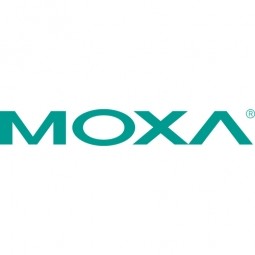
概述
公司介绍
MOXA 是支持工业物联网的工业网络、计算和自动化解决方案的领先供应商。 Moxa 提供全方位的创新、高质量解决方案,已部署在各行各业,包括工厂自动化、智能铁路、智能电网、智能交通、石油和天然气、海洋和采矿业。
物联网解决方案
物联网应用简介
技术栈
MOXA的技术栈描绘了MOXA在网络与连接等物联网技术方面的实践。
-
设备层
-
边缘层
-
云层
-
应用层
-
配套技术
技术能力:
无
弱
中等
强

Supplier missing?
Start adding your own!
Register with your work email and create a new supplier profile for your business.
实例探究.

Case Study
Remote Wellhead Monitoring
Each wellhead was equipped with various sensors and meters that needed to be monitored and controlled from a central HMI, often miles away from the assets in the field. Redundant solar and wind generators were installed at each wellhead to support the electrical needs of the pumpstations, temperature meters, cameras, and cellular modules. In addition to asset management and remote control capabilities, data logging for remote surveillance and alarm notifications was a key demand from the customer. Terra Ferma’s solution needed to be power efficient, reliable, and capable of supporting high-bandwidth data-feeds. They needed a multi-link cellular connection to a central server that sustained reliable and redundant monitoring and control of flow meters, temperature sensors, power supply, and event-logging; including video and image files. This open-standard network needed to interface with the existing SCADA and proprietary network management software.

Case Study
Remote Monitoring and Control for a Windmill Generator
As concerns over global warming continue to grow, green technologies are becoming increasingly popular. Wind turbine companies provide an excellent alternative to burning fossil fuels by harnessing kinetic energy from the wind and converting it into electricity. A typical wind farm may include over 80 wind turbines so efficient and reliable networks to manage and control these installations are imperative. Each wind turbine includes a generator and a variety of serial components such as a water cooler, high voltage transformer, ultrasonic wind sensors, yaw gear, blade bearing, pitch cylinder, and hub controller. All of these components are controlled by a PLC and communicate with the ground host. Due to the total integration of these devices into an Ethernet network, one of our customers in the wind turbine industry needed a serial-to-Ethernet solution that can operate reliably for years without interruption.

Case Study
Improving Production Line Efficiency with Ethernet Micro RTU Controller
Moxa was asked to provide a connectivity solution for one of the world's leading cosmetics companies. This multinational corporation, with retail presence in 130 countries, 23 global braches, and over 66,000 employees, sought to improve the efficiency of their production process by migrating from manual monitoring to an automatic productivity monitoring system. The production line was being monitored by ABB Real-TPI, a factory information system that offers data collection and analysis to improve plant efficiency. Due to software limitations, the customer needed an OPC server and a corresponding I/O solution to collect data from additional sensor devices for the Real-TPI system. The goal is to enable the factory information system to more thoroughly collect data from every corner of the production line. This will improve its ability to measure Overall Equipment Effectiveness (OEE) and translate into increased production efficiencies. System Requirements • Instant status updates while still consuming minimal bandwidth to relieve strain on limited factory networks • Interoperable with ABB Real-TPI • Small form factor appropriate for deployment where space is scarce • Remote software management and configuration to simplify operations

Case Study
Gas Pipeline Monitoring System for Hospitals
This system integrator focuses on providing centralized gas pipeline monitoring systems for hospitals. The service they provide makes it possible for hospitals to reduce both maintenance and labor costs. Since hospitals may not have an existing network suitable for this type of system, GPRS communication provides an easy and ready-to-use solution for remote, distributed monitoring systems System Requirements - GPRS communication - Seamless connection with SCADA software - Simple, front-end control capability - Expandable I/O channels - Combine AI, DI, and DO channels

Case Study
Remote Gas Pipeline Tunnel Temperature Monitoring System
One of Singapore's leading engineering and system integration providers needed exactly the right solution for a challenging gas pipeline application. With experience in assembling systems for many different vertical markets such as oil and gas networks, factory automation, and building automation, this system integrator realized that monitoring the temperature of a gas pipeline tunnel is crucial for safe operations. In the confined space of a tunnel, temperature rises easily, and the overheating could cause pipeline fractures that could lead to gas leaks or even explosions. Meanwhile, the long and narrow dimensions inherent to a tunnel meant that more home run cables must be installed to link all the temperature gauge data acquisition I/O devices back to the pipeline's SCADA system, increasing cabling costs. With these stakes and in these conditions, the simple act of regularly taking the temperature transforms into a formidable yet absolutely necessary requirement. System Requirements • Real-time tunnel temperature monitoring to provide early excessive heat warnings • Data acquisition and system management with SCADA system • Ethernet data acquisition system, but with efficient, cost-effective wiring
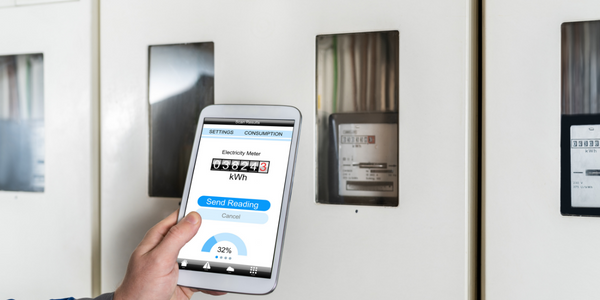
Case Study
Wireless Automated Meter Reading for Power Distribution Networks
In the Americas and Europe, electric power is provided by a number of private power plants distributed over wide areas. Optimizing distribution and transmission to meet market demand is always a challenge, particularly since power suppliers need to monitor data usage and combine the data for power generation, distribution, and transmission. Deploying long range wireless automated meter reading will allow power suppliers to better gauge and respond to market demand and optimally allocate energy distribution to control rising energy costs and service interruptions. The customer in this application is a cooperatively owned power services company with over $816 million in assets and nearly 4.3 million MWh in energy sales as of 2007. It supplies power and provides other management services in the western US. The company provides leadership and management of power supply options and continues to implement increasingly sophisticated power management techniques and innovative technologies, giving utilities in the region the ability to offer low-cost power options at stable prices. System Requirements • Long range wireless transmission (satellite, GPRS, WCDMA, microwave, etc.) over wide territories. • Need to transmit data in a low bandwidth network environment. • Self-monitor connection status, when the connection fails, system reboots to restore communication.
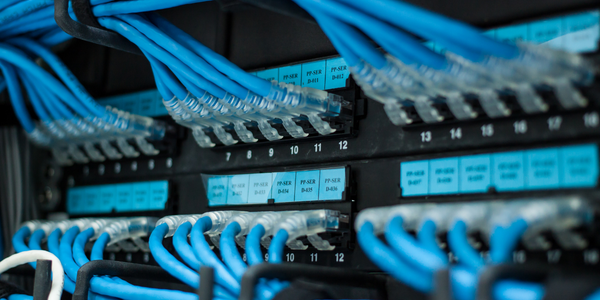
Case Study
Using SNMP for a Ethernet-Based Home Automation System
A startup company was developing a product which provides service partners with an integrated e-services platform that allows customers to remotely monitor and control devices in their home or business. In order to complete their project, the startup needed a control system that could monitor and control the many different devices used by their potential customers, preferably with an open protocol for greater flexibility. SNMP was their first choice, as it is commonly used and well understood in the IT field. The next step was to choose an I/O server to connect to the sensors in a home automation system. System Requirements - Open Ethernet-based procotol - SNMP protocol for I/O control - Compact size to save space - Long-term support and services
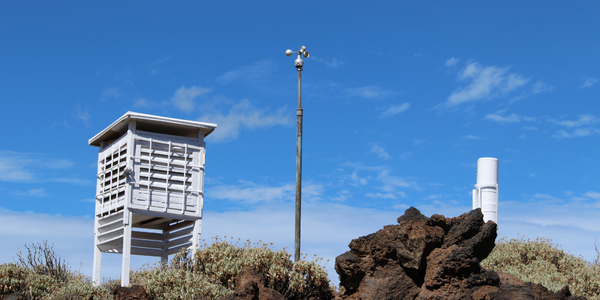
Case Study
Monitoring Unmanned Weather Stations
Unmanned weather stations play an essential role in the effort to analyze and predict the world's ever-changing weather patterns. The unmanned stations collect and store large amounts of weather data and then download the data at regular intervals to a back-end host for analysis and long-term storage. The computing device housed in the weather station must be robust enough to work continuously for long periods of time while exposed to a wide range of temperatures. It should also be able to collect readings from various sensors that use different data transmission protocols, and have the capability to store large amounts of data.

Case Study
Boiler Control System for Plastic Manufacturing Applications
Factory automation applications must be equipped to handle and monitor the myriads of information from attached devices. For plastic manufacturing applications, the boiler control system plays a critical role by gathering and regulating information to ensure production is accurate and smooth. In this particular case, the customer combines eight subsystems that include power meters, water meters, alarm output, displays, and I/O status to be controlled by several intelligent controllers with Modbus RTU interface. The Modbus TCP protocol is used for this application due to the distance. System Requirements: • Modbus serial to Modbus TCP translation • Multiple slaves/masters support • Automatic Modbus TCP response time detection
Case Study
Intelligent and Active Gas Detection System for Semiconductor Manufacturing
As one of the world's largest semiconductor manufacturers, our customer needs to continually refine and expand their manufacturing capabilities to meet the constant, ever-growing demand for electronics products. Semiconductor fabrication requires minute nanometer-scale operations using dangerous chemicals and gases. To continue growing their manufacturing capabilities while maintaining high levels of precision, the manufacturer expanded operations with a new plant which was to incorporate new gas detection alarm technology. System Requirements • Real-time alerts of abnormal gas levels on the supervisory control and data acquisition (SCADA) system • Local alarms with local control logic to alert personnel of high gas levels • Mixed analog and digital I/O solution for broader device compatibility • High reliability

Case Study
Cellular RTU for Building Beijing Water Pipeline Remote Monitoring Systems
Water pipeline pressure needs to be kept at 0.3 Mpa in order to deliver a reliable stream of tap water to homes, businesses, and factories. Water companies use real-time monitoring systems in order to achieve consistent water pressure management that can quickly respond to any sudden drops of water pressure. System Requirements - Monitor all the distributed pressure points of a widely distributed water pipeline network - Monitor and display in real-time data from every pressure value on the central SCADA system HMI - Stable cellular communications network - High expandability
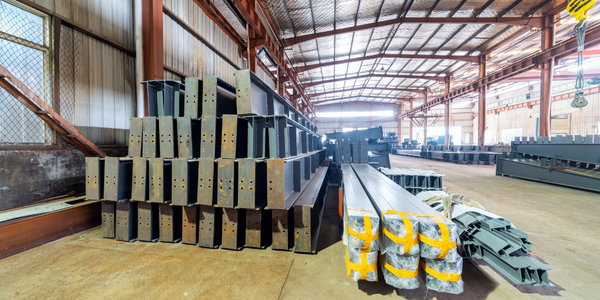
Case Study
A Reliable Power Control Automation System for a Steel Factory
One of the largest steel factories in China needed proper communication control units for data processing and protocol conversion with the devices at remote field sites. These computers would replace the IPCs and can easily create a distributed system at the front-end site with a centralized management platform at the back-end control center. This stainless steel factory has deployed a power substation system that contains several subsystems. Each subsystem uses smart meters, and needs to optimize resources, centralize management, and enhance efficiency. In addition, all distributed smart meters at the field site need to be centrally monitored and managed by a system called the “CCMS3000 central management system”, located at the control center. Each 35KV/10KV substation communicates with the back-end server via Intranet, and manages the centralized management and monitoring of the 35KV/10KV. The entire system aims to optimize the power network management and maintenance cost, enhance power distribution quality and management, and deliver real-time discovery, analysis, recording, and handling of problems. The CCMS300 central management system is expected to bring reliability to real-time monitoring of the operation status of all devices at the substations. It needs to perform several tasks, such as analyzing historical workload, power consumption, and system balance, as well as enhance system or device operation efficiency. This system includes four subsystems: Factory 1: Main Station: A communication cabinet includes a telecommunication control unit (DA-662), a switch, 2 optical transceivers, and communication units. Station C: A communication cabinet includes a serial device server (NPort 5430), an optical transceiver, and communication units. Station D: A communication cabinet includes a serial device server (NPort 5430), an optical transceiver, and communication units. The telecommunication control unit (DA-662) is responsible for collecting and controlling all data from stations A, B, C, D, E, and the water station from Factory 1. Factory 2: Main Station: A communication cabinet includes a telecommunication control unit (DA-662), and various communication units. This DA-662 is responsible for collecting and controlling all data from stations G, K, and the water station from Factory 1. Hot-rolled Factory: Main Station: A communication cabinet includes a telecommunication control unit (DA-662), a switch, an optical transceiver, and communication units. Substation: A communication cabinet includes a serial device server (NPort 5430), an optical transceiver, and communication units. The DA-662 is responsible for collecting and controlling all data from the hot-rolled factory and the hot-rolled water station. Cold-rolled Factory: Main Station: A communication cabinet includes a telecommunication control unit (DA-662), a switch, an optical transceiver, and communication units. Substation: A communication cabinet includes a serial device server (NPort 5430), an optical transceiver, and communication units. The DA-662 is responsible for collecting and controlling all data from the cold-rolled factory and the cold-rolled water station. The communication between the DA-662 and the back-end server is based on the TCP/IP IEC 106 protocol. System Requirements • Centralized and stable management platform for the distributed system • Front-end data processing for the field site devices • Protocol conversion among Modbus, DLT645, and TCP/IP IEC 104 • Redundant network architecture for continuous system operation • Easy integration with other communication system • Long MTBF to enhance system reliability
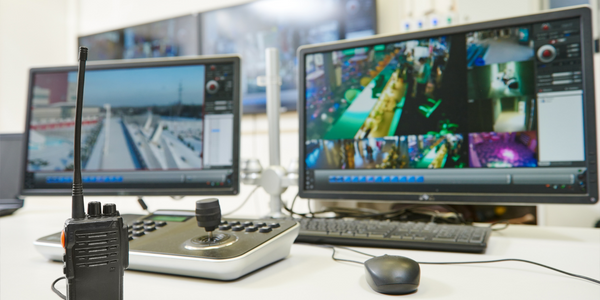
Case Study
Video Networking Solution Facilitates Visual Management for Siemens DESIGO
Incorporating video surveillance with SCADA/HMI systems is now a trend for automation applications. In general, the ActiveX Control component is required to embed video images in SCADA/HMI systems. In addition to installing the ActiveX Control components, programming is also required to properly facilitate video displays and control functions. Unfortunately, the kind of programming required can pose problems for automation system integrators because they are not familiar with video technology. Moxa is working with Siemens Taiwan Building Technologies (BT) Department to develop a userfriendly tool with graphical interface for Siemens DESIGO™ system, an up-to-date BA solution of freely programmable management and automation stations for the full spectrum of building services applications, to save time and effort with programming video related functions. System Requirements • Activate live video displays when an alarm is triggered at a remote site. • Remote PTZ camera control is required, including direction control and presets control. • Audio on/off functions
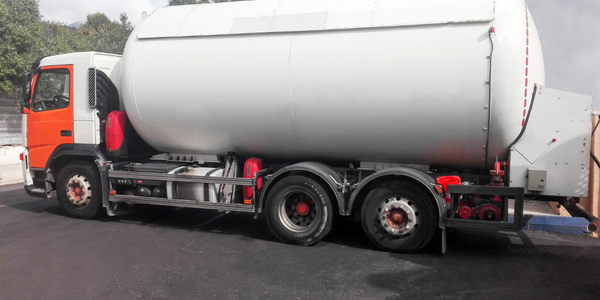
Case Study
Visual Management on Gas Tankers
Gas tankers are massive ships with a limited crew, making them extremely difficult to monitor. Video surveillance systems, which use a large number of widely distributed devices, and fire prevention systems are both crucial elements of a gas tanker monitoring system.The system used for this application is a legacy analog CCTV surveillance system that is completely independent from the main monitor and control SCADA system. With this system, the administrator responds to an event by first using the SCADA system to locate the event, and then accesses the appropriate surveillance camera from the CCTV system to view the location. The goal is to upgrade the system so that only one step is required. This is done by integrating the CCTV surveillance system into the SCADA system, in which case the surveillance system becomes a SCADA sub-system, making centralized control and monitoring possible.System Requirements- Upgrade to an IP video surveillance system for integration with the existing SCADA system- Live video display (through the SCADA system)- Enable events in the SCADA system to automatically trigger live video display- All the devices need to be of rugged design and have an anti-explosion defense

Case Study
Bandwidth-Saving IO Solutions for a Solar Farm Lighting Control System
A company in the renewable energy industry needed to find an I/O device which can operate within the demanding requirements of renewable energy systems. Renewable photovoltaic systems are one of the most sustainable and reliable energy technologies available today, and today more and more countries are deploying solar farms to harness the power of the sun to generate a clean power with low CO2 emissions. As an expert in the design, development, installation, and maintenance of photovoltaic systems since 1998, the company provides a solar farm remote monitoring service via satellite communications. However, satellite bandwidth is very limited. Their ideal I/O device must be able to operate in a low-bandwidth environment and support scheduling functions for better light management. System Requirements - I/O device that can overcome low bandwidth limitations - Scheduling function support for lighting systems - SNMP protocol support for remote device monitoring and control
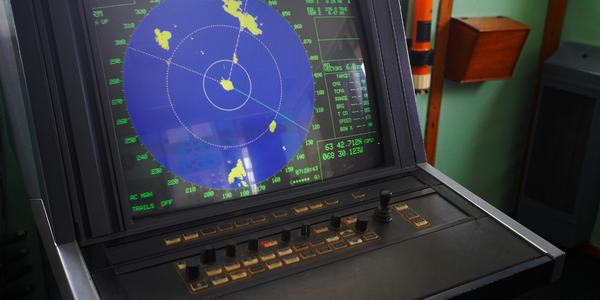
Case Study
Real-time Networked Sonar System for Ships
A multinational, knowledge-based corporation that delivers marine electronics solutions is utilizing industrial Ethernet technology to help ensure that operations at sea are dependable and optimal. Based in Europe, the company has nearly 4000 employees working in 20 countries around the world, and produces high-tech systems for offshore oil and gas operations, merchant marine systems, and various applications for the defense and aerospace industries. The company produces products and systems used by merchant vessels and offshore installations for positioning, navigation, automation, as well as for surveying and monitoring the seabed, and for fishing vessels and fi sheries research. As one of the major suppliers of high quality marine electronics in the world, their products include chart plotters for yachts, triple redundant dynamic positioning systems for oil drilling rigs, and sonar and instrument systems for scientifi c research vessels. Products used for marine applications must be rugged enough to endure the corrosive effects of salt water, and be able to withstand excessive amounts of vibration and shock. For this reason, the company only uses DNV and GL certified products and components to ensure that their systems can meet the high standards required by the maritime industry.

Case Study
WLAN Enables Constant Connectivity Between Moving Trains and Trackside
The link between the fast-moving train and the broader fixed trackside infrastructure has always been one of the key components of a train communications network. A major rail operator in Japan sought to build a trackside infrastructure that will offer a corridor of wireless coverage on and around the track. This would give the wireless clients on the train constant high-speed connectivity to support applications both onboard and along the rail line. There are numerous issues to face before this network is ready to tackle challenging CBTC operations: - seamless roaming is needed to provide uninterrupted communications, - EMI/EMC compliance is critical to ensure that there is no system performance degradation due to harsh wayside operating conditions. System Requirements • Constant high-speed connectivity along the track • Optimized AP coverage along a 20 km route • Seamless roaming between trackside APs • Open standards secure future upgrade path • Compliant with rolling stock and trackside standards
同类供应商.

Supplier
Advantech
Founded in 1983, Advantech is a leader in providing trusted innovative embedded and automation products and solutions. Advantech offers comprehensive system integration, hardware, software, customer-centric design services, and global logistics support; all backed by industry-leading front and back office e-business solutions.

Supplier
Sierra Wireless
With a rich 24-year history of innovation in the wireless space we have been first to market with many technology solutions for global customers.Our innovative products and solutions already connect thousands of businesses to critical data and millions of people to information. Our customers Trust us to develop products and services that get them to market faster and can in turn, help save lives, reduce carbon emissions, and make neighborhoods safer.Sierra Wireless designs modems that enable PCs, notebook computers, and vehicles to communicate wirelessly. Its products are used for Internet access, e-mail, database access, vehicle dispatch, and a range of machine-to-machine applications. Its product lines include AirPrime (embedded wireless modules), AirLink (intelligent gateways), and AirVantage (machine-to-machine cloud products). The company sells directly and through resellers, primarily to customers in North America. Manufacturers also embed the company's wireless modules into their computing products.

Supplier
Digi
Digi International is a leading global provider of mission-critical and business-critical Internet of Things (IoT) connectivity products and services. We help our customers create next generation connected products and deploy and manage critical communications infrastructures in demanding environments. Our embedded modules and off-the-shelf routers, gateways and network products are designed for relentless reliability and deliver unquestioned performance and security. Our cloud-based software and professional services help customers put their connected products and assets to work across a broad range of mission-critical industry applications. Founded in 1985, we’ve helped our customers connect over 100 million things, and growing.

Supplier
Webdyn
Webdyn is the brand of Flexitron Group dedicated to design and manufacture industrial IoT solutions, routers, modems and gateways for wireless communication GSM (LTE / 4G / 3G / 2G), wired (RS232, RS485, Ethernet or CAN) and short-range wireless (Bluetooth) , Wi-Fi or LoRa).With more than 30 years of experience, Flexitron Group provides the best technological devices and services through its subsidiaries, developing connected solutions adapted to international markets and customers.We designed our product portfolio to help our partners access opportunities within the rapidly growing IoT and Industrial IoT environment. We propose IoT modems, gateways and routers for all your IoT applications. From automation, metering or photovoltaic, to public transport connectivity – hundreds of thousands of our networking devices are currently at the heart of our partners’ IoT solutions.
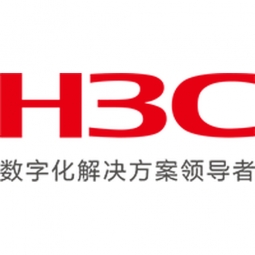
Supplier
H3C Technologies
H3C is an industry leader in the provision of Digital Solutions, and is committed to becoming the most trusted partner of its customers in their quest for business innovation and digital transformation.We offer a full portfolio of Digital Infrastructure products, spanning across compute, storage, networking, 5G, security and related domains, and provide a comprehensive one-stop digital platform that includes cloud computing, big data, artificial intelligence (AI), industrial internet, information security, intelligent connectivity, new safety, and edge computing, as well as end-to-end technical services. We are also the exclusive provider of HPE® servers, storage and associated technical services in China.







